A comment came up the other day that it was unwise to use all channels of a four-channel amplifier to power a pair of subwoofers. Not only is this incorrect, but this practice opens up several unique system designs and installation possibilities, especially where high-power requirements are necessary. Let’s dive in!
Four-Channel Amplifiers Are Amazing!
In terms of application flexibility, investing in a four-channel amp is a great choice. It can be used to power a set of front and rear speakers while maintaining fader capability. It could also run a set of midrange drivers from one pair of channels and tweeters from the other pair. When combined with a digital signal processor, this is a recipe for a fantastic soundstage in the front of a vehicle.
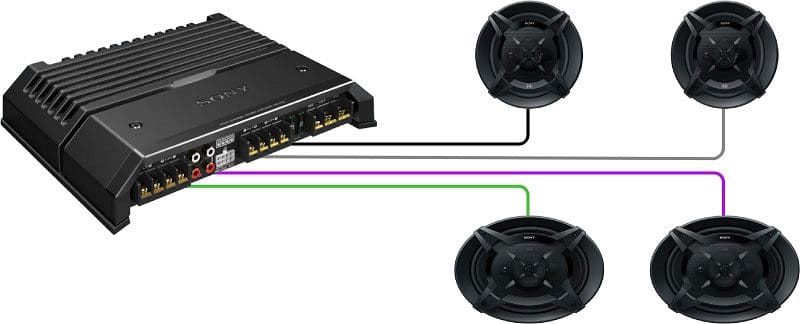
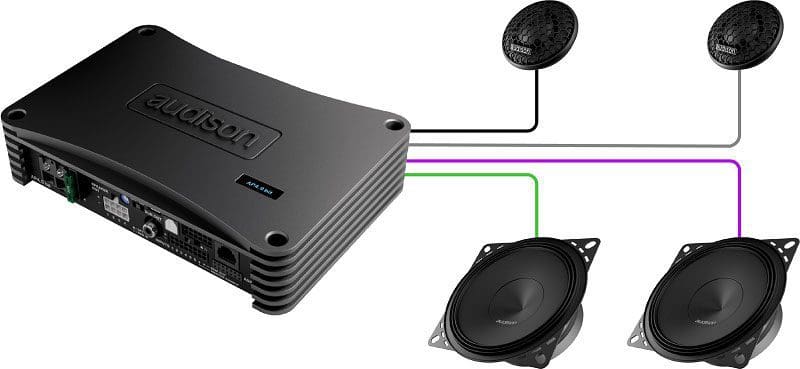
Another popular application for a four-channel amplifier is to power an entire audio system that includes a subwoofer. The front and rear speakers can be wired in parallel to the front channels, and the subwoofer can be bridged to the rear channels. This design maintains subwoofer level control functionality from the source unit or includes level control on the amplifier.
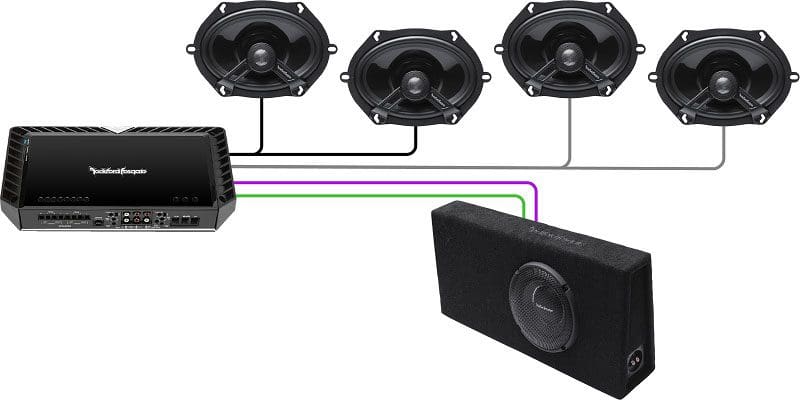
Many car audio retailers that install marine audio systems will use a four-channel amplifier to power a pair of wakeboard tower speakers. This application typically provides more power to the speakers at significantly less cost than an equivalently powerful two-channel amplifier. This is also a popular application for four-channel motorcycle amplifiers where only two speakers are in use. We’ll add that it’s worth being very cautious with this sort of application. Most compact four-channel amplifiers can produce more than 140 watts of power when bridged. This is enough power to damage almost any two-way speaker, no matter what the power ratings say.

Many amplifiers include a bridging switching that combines the left and right inputs to produce a mono signal for use when driving a single speaker. Finally, a select number of four-channel amplifiers also include a dedicated two-channel switch. With this switch enabled, the left input is routed to one pair of channels in mono and a right input is routed to the other pair.
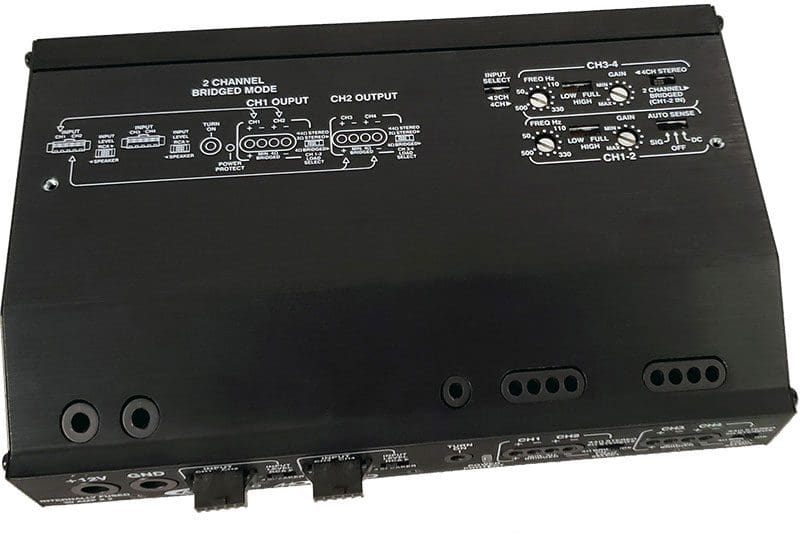
Four-Channel Amplifiers and Subwoofers
Let’s get back to the original statement about using a four-channel amplifier on subwoofers. First, is there anything wrong with using a subwoofer on a multichannel amplifier? Short answer – no. As long as the amplifier offers frequency response that extends low enough (and all of them do), they are ideal for a subwoofer. You’ll find that most multichannel amplifiers have the option of high- or low-pass filters on both sets of channels.
The key to powering subwoofers is to optimize the drivers’ impedance with the amplifier’s output capabilities. Most four-channel amplifiers make the most power, with each channel driving a 2-ohm load or when both sets of channels are bridged into a pair of 4-ohm loads.
Using a Four-Channel Amplifier with Subwoofers
There are a few ways that a four-channel amp can be used to power subwoofers in a car audio system. Your installer can wire a 4-ohm subwoofer to each pair of channels in a bridged configuration. A similar option would be to wire a dual 2-ohm voice coil subwoofer to each pair of channels with one coil on each.
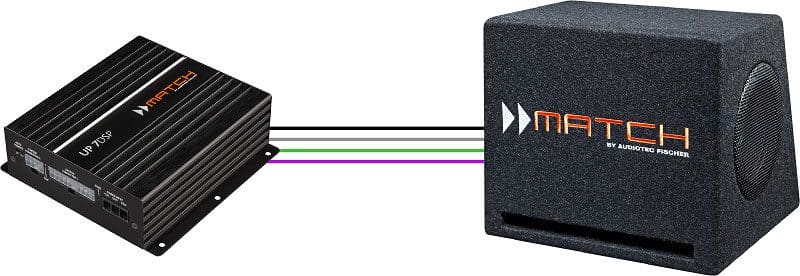
If you have a single, dual 4-ohm voice coil subwoofer, and it can handle the power the amp will produce, then your installer can wire one voice coil to one pair of bridged channels and the other coil to the other pair.
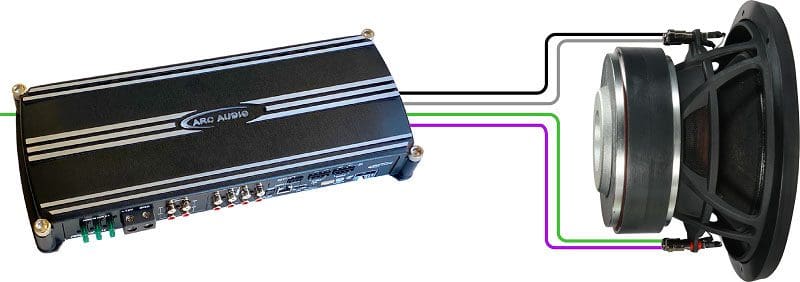
Are There Issues with Bridging Amplifiers?
Any time there are separate sensitivity controls for the channels driving a single speaker, care must be taken to ensure that the voltages produced are equal. Your installer can use a multimeter in its AC Volts mode along with a test tone to match things perfectly. Of course, this applies to two-channel amplifiers with individual sensitivity controls in bridged applications as well.
Other than that, all amplifiers operate linearly, so any increase in the signal that’s equal on one channel will be proportionate on all channels set with the same sensitivity levels and crossover frequencies.
If you have a multichannel amplifier where many channels will connect to a single speaker, make sure that the crossovers are set to function identically on all channels. This is more crucial than variances in voltage as crossovers not only affect output level, they can alter the phase relationship between signals and cause unwanted cancellation. Imagine one part of the voice coil trying to push the cone upward while the other winding is pushing it down. The results will be a dramatic decrease in output in a frequency range where it’s not desirable.
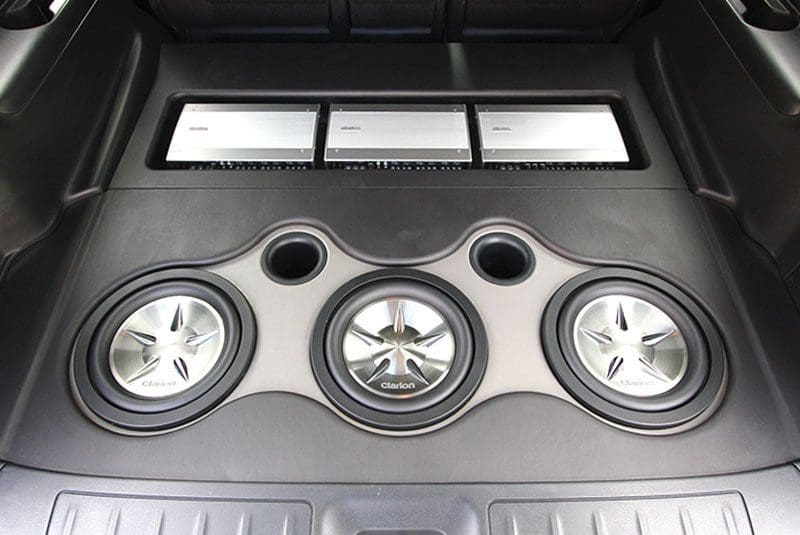
Don’t Overload Me!
We’ve talked about the benefits of not running amplifiers into low impedances in terms of their efficiency and output voltage regulation. The discussion about a four-channel amplifier and subwoofers behind this article revealed that someone put two subwoofers on one pair of channels and none on the other. The application would have been better served in terms of sound quality and performance with even distribution of the subwoofers, even if the amp were to make slightly less power. Remember, you need to double the power produced by the amplifier to increase the system’s output by 3 dB. Since it’s unlikely that overloading one set of channels resulted in double the power production, this was an unwise decision.
All this stuff comes down to knowing the features and intended implementation of the products suggested for a specific application. Choosing the “right” amplifier for a particular task can mean balancing the use of an existing product for an upgrade or offering a client the most power for their dollar in a newly designed system. Ultimately, the success or failure of an upgrade relies on everything – including product selection, integration and configuration – being on point.
This sort of thing is what makes shopping for an expert installer so challenging. When it’s time to upgrade your car audio system, start by visiting the specialty shops in your area. Ask questions about their suggestions so that you can understand their philosophy. If it seems counterintuitive when they suggest using a four-channel amp in a particular application, don’t fret. They might be trying to help.
This article is written and produced by the team at www.BestCarAudio.com. Reproduction or use of any kind is prohibited without the express written permission of 1sixty8 media.
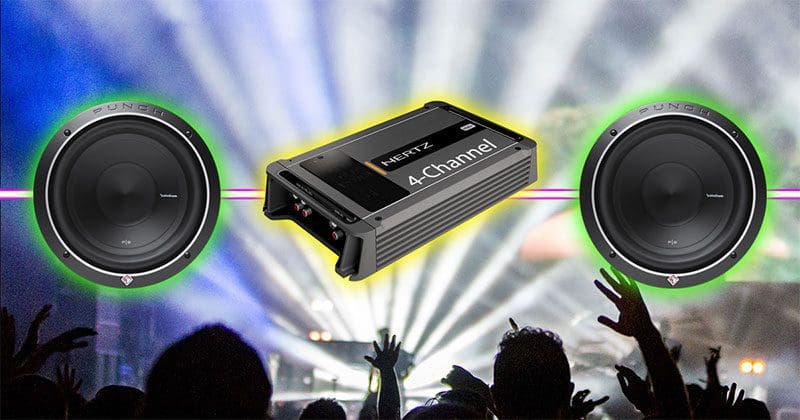
Leave a Reply